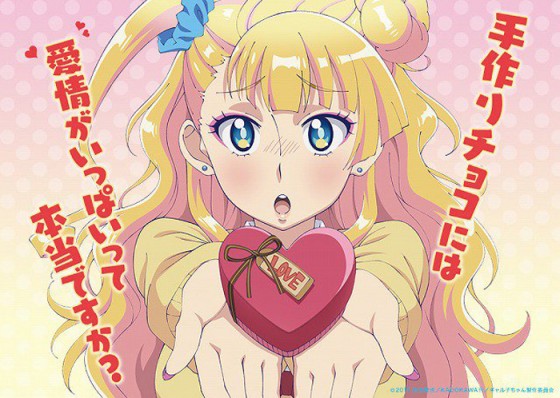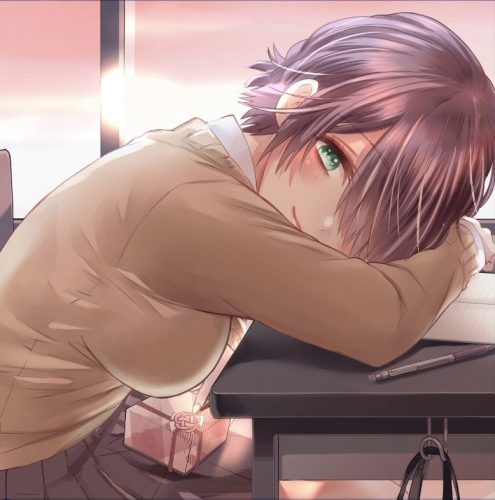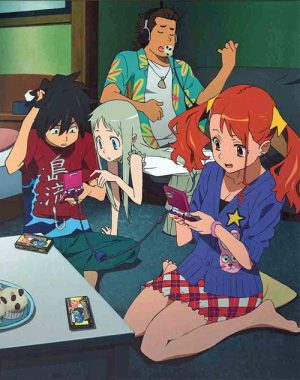
Valentine's Day is when many people give presents to their loved ones or significant other. If you have seen a lot of anime or read a lot of manga, then you have seen a lot of scenes about Valentine's Day or have your fair share of them. It's significantly more common to see them in romance anime and manga. It's one of the most common scenes you would see in certain anime and manga.
If anime and manga were introduced and gave people a chance to peek into an aspect of Japanese culture, Valentine's Day would be one of them. Valentine's Day, like the west, is very much celebrated in Japan and to some people, it's an important day for them. So, seeing Valentine's Day scenes in many anime and manga is unsurprising. One unique aspect of Japan's Valentine's Day is their form of gift giving in chocolates. You have seen/read it many times, where a girl gives chocolates to a boy. There is actually a meaning to giving these chocolates. There are also different types of chocolates to give.
Confused? We were too. So, let's learn more about the different types of chocolates given in Japan.
First, Let's Talk About Valentine's Day In Japan

Valentine's Day in Japan is unique and has its own customs and traditions. In the west, Valentine's Day is a day for anyone to express their feelings to their loved ones or their significant other. They do so through various things, such as giving flowers or chocolates or taking them out for dinner. In Japan, only women can give presents and express their love or interest in someone on this Day. While they can give other things as presents, most people receive chocolates. It's why in most valentine's scenes and episodes, you would mostly see the girls giving chocolates to the guys. You can especially see them in romance anime and manga, such as Kimi ni Todoke and My Love Story, where both Sawako and Rinko give their chocolates to Kazuhya and Takeo (their love interests) instead of the guys. Valentine's Day is also a chance for women to confess or at least express to the person that they are romantically interested in them. It goes hand in hand with the chocolates they will give, making it a popular holiday for love confessions.
If you wonder if men will give chocolates or gifts, they do! March 14th, known as White's Day, men would give back the chocolates they received on Valentine's Day. So, if you think the men are out of the woods, they aren't.
Giving chocolates to their significant other is one of many traditions they have. Another custom is that the women give chocolates to all the men in their life as a sign of either goodwill, friendship, or even as an obligation. With chocolates being the one primary gift to give to men, it is no wonder why they have made different types of chocolates for the occasion.
Types Of Valentine's Day Chocolates

In anime and manga, they mentioned two particular types of chocolate: giri and honmei. Some series also mention another type of chocolate called tomo chocolate. When watching or reading Valentine's scenes, many people will guess that the chocolates are one or the other if they haven't explicitly said it. Japan, though, has different types of chocolates that women would give on Valentine's Day.
What is giri and honemi? What other types of Valentine's chocolates are there? Well, below are the different types of Valentine's Day chocolate:
Giri choco (義理チョコ): They are called obligation chocolates in English. Women give these chocolates to guys who are not in a romantic relationship or romantically interested. They include co-workers, male friends, superiors, classmates, or people they feel indebted to. They are usually store-bought and mostly cheap chocolates with simple designs and wrappings. It is one of the two chocolates in every anime and manga scene. In Japan, women feel obligated to give chocolates to all the men they have in their life. That is why it's common to see Valentine's scenes in anime and manga where girls give chocolates to guys that aren't their main love interests.
For women who work in companies or for clubs and such, the girls usually pitch in to buy a box of chocolates to give out to their male co-workers. A good example is in My Senpai Is Annoying, where Futaba and her female co-workers bring chocolates to their work to give to their male co-workers. Those chocolates would be considered giri choco.
Tomo choco (友チョコ): Tomo choco is known as friends chocolates, where the word tomo came from the word tomodachi, which means friends in Japanese. It's one of the recent customs in Japan for Valentine's Day. Tomo choco is usually either simple chocolates or cookies wrapped up nicely for the Day. Unlike giri choco, tomo choco is a sign to celebrate their friendship. They give this type of chocolate to friends or close friends, whether male or female. The custom is even starting to show in anime and manga with the characters giving chocolates as tomo choco instead of giri choco.
A good example would be in Komi-san Can't Communicate 2, where Komi-san gave chocolates to all her friends for Valentine's Day. Although the show didn't explicitly say it (except maybe for one classmate), since Komi-san wanted to become friends with everyone, giving chocolates to her classmates with whom she usually hangs out or considers her friends can also be interpreted as tomo choco. Giving her friends tomo choco would be a way for Komi-san to celebrate the friendship she gained during the series.
Sometimes, the men also join in the custom and give chocolates to their friends. Just like in Komi-san Can't Communicate 2, where one of the male characters, Katai, gives his chocolate to his male friend, Tadao, as a sign of his friendship with him.
It's mostly popular with women, though, and the receipt of these chocolates is primarily from women.
Honmei Choco (本命チョコ): Honmei Choco is known as true feeling chocolates. These are the types of chocolates that women would give to their significant other or the person they have romantic feelings for. It often goes hand-and-hand with a confession if they haven't done so. The chocolates can be store-bought, or they can be homemade chocolates. Unlike giri or tomo choco, honmei choco is usually high quality, more expensive, and more decorated to emphasize the special meaning behind the chocolate. Homemade honmei chocolates are also decorated and were put into a lot of thought to highlight their special meaning. It is also one of the two types of chocolates you would see in anime and manga, the other being giri choco. Because of its popularity, there are many scenes of girls trying to give their chocolates to the guys they are interested in (whether they deny it or not) and sometimes even confessing to them. It is a popular scene, especially in romance anime and manga.
Jibun choco (自分チョコ): Jibun choco is self-chocolate or my chocolate. It's pretty explanatory. Instead of buying or making chocolates for someone, they buy or make them themselves. It's for those who do not receive chocolates or do not have anyone to give chocolates to.
Fami choco (ファミチョコ): Fami choco in English is called family chocolate. These are chocolates given to their husbands, fathers, and sons of the family. It can be homemade or store-bought. For example, Tanaka-kun Is Always Listless Tanaka and his friend were given chocolates from his sister, Rino. The chocolates that Rino gave to his brother can be considered Fami choco.
Gyaku choco (逆チョコ): Gyaku choco is called reverse chocolate. Gyaku choco is the opposite of the traditional custom of Japan's Valentine's Day. Instead of women, the men give chocolates to women. An excellent example of this is Brother's Conflict OVA, where they have special Valentine's Day episodes. It's Valentine's Day, and while the boys are trying to figure out who would give Ema Hinata, their step-sister, her chocolates, they decide to make their chocolate to give to her, making it a gyaku choco. It's one of the most recent customs on Japan's Valentine's Day. The chocolates also depend on the types of chocolates they give and the meaning they are trying to convey.
So, Giri, Tomo, or Honmei? How Can You Tell?

The only way to tell what type of chocolate the boys received is when the giver explicitly tells them what type of chocolates they are. While you can guess the meaning behind the chocolate they were given based on the kinds of chocolates, it's best to know what type of chocolates they received from the person who gave them. It's why many women often make sure to state what chocolate they give to avoid any misunderstandings.
Final Thoughts

Valentine's Day in Japan has its unique set of customs different from the west, and it's celebrated nationwide. It is unique from who and how they give their valentine's day gifts to the type of gifts they give and the meaning behind those gifts. It is no wonder why many anime studios and mangaka often differentiate the types of chocolates the characters give in their works. It's interesting how the Japanese want to convey their feelings depending on the kind of chocolates given.
So, what type of chocolates have you received? What do you think about how Japan celebrates Valentine's Day? Let us know in the comments below!
Recommended Post
[Fujoshi Friday] Top 10 BL Couples for Valentines
Recommended Post
5 Manga Guys that Would Make the WORST Valentines
Recommended Post
5 Manga Girls that Would Make the WORST Valentines
Recommended Post
10 Anime Characters that Would Make the WORST Valentines
Recommended Post






